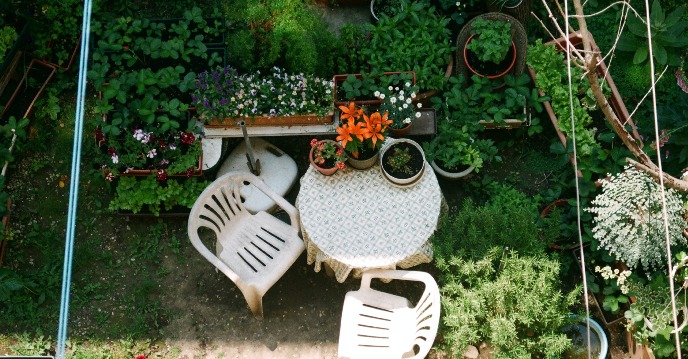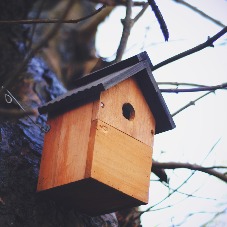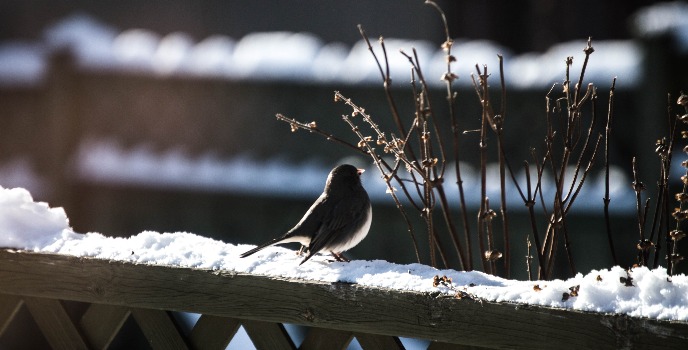Winter is Coming - How to get your Garden or Balcony ready for Winter
| Date: | 26 October 2022 |
| Author: | Green Office |

Do you have a balcony, or even a (small) garden? Make your outdoor space winter-ready within three steps! In this blog, Jylles will tell you all you need to know about how to make your green area winter-proof for plants and wildlife! Learn how to get through the cold days, and prepare for flourishing in the spring!
The 23rd of September is marked as the start of the astronomical autumn. By this time, those hot days of summer have gradually changed into rainy days. Foliage turns yellow, orange, and red, and most late summer flowering plants slowly give in to the change of seasons. Traditionally for gardening, this seasonal change means that you start preparing for the winter: pruning your plants, and endlessly raking leaves off your lawn. However, in recent years sustainable gardening trends actually refrain from traditional gardening habits. Here are some important dos and don’ts that help you prepare your garden or balcony for the winter in a sustainable fashion.

Do nothing
Perhaps one of the most important tips is to be a little messy and do nothing. Wildlife will benefit if you don’t prune your plants in the fall. For example, mice and hedgehogs will collect ornamental grasses or various other plants that are dying off, and use them as nesting material. Besides, heavy pruning sessions may cause you to disturb animals that are already hibernating.

Another benefit of doing nothing is that seed-eating birds will be able to find more food. These can be found in dying off plants, so there is no need to prune them back in the fall! In addition, decomposers like bacteria, fungi, and worms will recycle dead leaves into chemical nutrients such as carbon and nitrogen that are released back into the soil, air, and water. So just leave them be.
If you really can’t stand the look of brown leaves on your lawn then rake them up and put a whole bunch together on a pile alongside some sticks and logs. This will create shelter and even hibernation habitats for hedgehogs, rodents, and snakes.
Invest in new plants
It may come as a surprise for some of you, but October is a great month for adding new plants to your garden or balcony. During the fall, temperatures and sun hours drop causing a plant to concentrate on developing its roots system underground, as opposed to its leaves and branches above ground. Weather conditions in October cause the soil to be moist and relatively warm. Due to these conditions, your new plant can develop a strong root system, increasing its chance of survival during spring and summer. Another benefit is that you won’t have to water your plants.

October is perfect for a visit to your local garden center to get some new plants. Additionally, make sure to plant some spring bulbs as well. These are a crucial food source for early pollinators, providing the nectar that they need. Try to look for pesticide-free and biological plants to make your trip a true success!
Help out birds and insects
During the cold winter months, a lot of birds struggle to find enough food. Help them out by hanging up suet balls over your balcony or in your garden. The fats in those balls will provide the birds with extra insulation during a harsh winter or migration, increasing their chances of survival. Don’t worry about birds becoming dependent on your birdfeeders! Birds like a varied diet and will only stop by for nutrients that they are unable to find in the wild. Additionally, you can place shallow containers filled with water around the feeding area.

You can also build or buy nest boxes, but make sure to check whether the measurements and placement of the box are suitable for the birds living in your area. If you already have a nest box in your garden, now is the time to clean it out for the spring as birds like to make their own nest. Lastly, add insect hotels in your garden or on your balcony. Insects such as ladybugs, butterflies, and solitary bees use these to lay eggs and rest so they can survive through the winter.

Increasingly animals are forced to seek refuge in our community green spaces and gardens - and providing food and shelter for wildlife is a brilliant way to help boost biodiversity. By applying these incremental changes your garden or balcony will serve as a safe haven for animals during the winter. All while setting it up for a great start in the spring!
Hi there! My name is Jylles and I am a Dutch MSc student in ‘International Business & Management’. Within my master’s, I am taking the ‘sustainable society focus’ which allows me to combine my passion for sustainability with my education. In my spare time, I love to learn more about biodiversity by watching a lot of nature documentaries and reading about rewilding projects. Whenever I can, I try to share my knowledge on sustainable topics, creating awareness and behavioral change amongst my friends and family.

